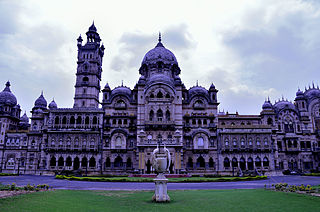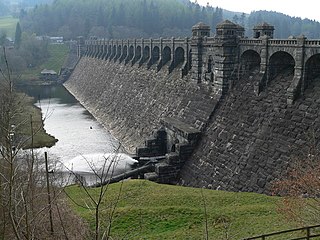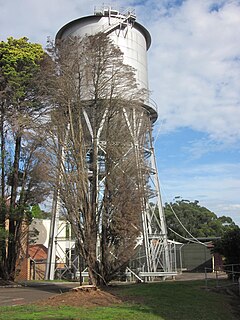
Jaipur is the capital and the largest city of the Indian state of Rajasthan. As of 2011, the city had a population of 3.1 million, making it the tenth most populous city in the country. Jaipur is also known as the Pink City, due to the dominant color scheme of its buildings. It is located 268 km from the national capital New Delhi.

The Hunter Region, also commonly known as the Hunter Valley, is a region of New South Wales, Australia, extending from approximately 120 km (75 mi) to 310 km (193 mi) north of Sydney. It contains the Hunter River and its tributaries with highland areas to the north and south. Situated at the northern end of the Sydney Basin bioregion, the Hunter Valley is one of the largest river valleys on the NSW coast, and is most commonly known for its wineries and coal industry.

Vadodara also known as Baroda, is the third largest city in the Gujarat State. It is the administrative headquarters of Vadodara District and is located on the banks of the Vishwamitri river, 141 kilometres (88 mi) from the state capital Gandhinagar. The railway line and NH 8 that connect Delhi and Mumbai pass through Vadodara. The city got its name due to abundance of Banyan (Vad) trees found in the city. The city is also known as Sanskari Nagari and Kala Nagari of India.

Warragamba Dam is a heritage-listed dam in the outer South Western Sydney suburb of Warragamba, Wollondilly Shire in New South Wales, Australia. It is a concrete gravity dam, which creates Lake Burragorang, the primary reservoir for water supply for the city of Sydney. The dam wall is located approximately 65 kilometres (40 mi) to the southwest of Sydney central business district, near the town of Wallacia.

Sydney Water or formally, Sydney Water Corporation, is a New South Wales Government–owned statutory corporation that provides potable drinking water, wastewater and some stormwater services to Greater Metropolitan Sydney, the Illawarra and the Blue Mountains regions, in the Australian state of New South Wales.

The Manly Dam Reserve, also known as the Manly Warringah War Memorial Park, is an urban bushland reserve located in the Northern Beaches region of Sydney, Australia. The reserve adjoins the south-eastern edge of Garigal National Park.

Water Corporation is the principal supplier of water, wastewater and drainage services throughout the state of Western Australia. It is the seventh successive agency to deal with the services in Perth, Western Australia.

Water restrictions have been enacted in many cities and regions in Australia, which is the Earth's driest inhabited continent, in response to chronic water shortages resulting from the widespread drought. Depending upon the location, these can include restrictions on watering lawns, using sprinkler systems, washing vehicles, hosing pavement, refilling swimming pools, etc. Overpopulation, evidence of drying climates, coupled with corresponding reductions in the supply of drinking water has led various state governments to consider alternative water sources to supplement existing sources, and to implement "water inspectors" who can issue penalties to those who waste water. Many states describe the different levels of water restrictions in terms of "stages": starting at Stage 1, for the least restrictive, going up as far as Stage 8. The highest level reached in the current drought has been stage 7 for Kingaroy. There are different definitions given to each "stage" in different States.

Williamtown is a rural suburb of the Port Stephens local government area in the Hunter Region of New South Wales, Australia. It is located on the main road between Newcastle and Nelson Bay.

Tomago is a combined industrial/semi-rural suburb of the Port Stephens local government area in the Hunter Region of New South Wales, Australia. It is located just north of the Hunter River and west of the body of water known as Fullerton Cove. Tomago means "sweet water" in the local Aboriginal language. In 2016 277 lived in Tomago with a median age of 55, 72.7% born in Australia and 80.4% only speaking English at home.

Ernest Macartney de Burgh was an Irish-born Australian civil engineer, chief-engineer for water supply and sewerage in New South Wales.

The Lake Manchester Dam is a concrete gravity dam with an un-gated spillway across the Cabbage Tree Creek that is located in the South East region of Queensland, Australia. The main purpose of the dam is for potable water supply of Brisbane. The impounded reservoir is called Lake Manchester.
The Philippines’ water supply system dates back to 1946, after the country declared independence. Government agencies, local institutions, non-government organizations, and other corporations are primarily in charge of the operation and administration of water supply and sanitation in the country.

Tillegra Dam was a proposed dam on the Williams River to be located 20 km (12 mi) northwest of Dungog, in the Hunter Region of New South Wales, Australia. It was first proposed in the 1970s but a formal proposal was not announced until 2006. Community opposition and changing needs saw the end of the proposal in November 2010. Hunter Water Corporation divested itself of its Tillegra landholding in 2015, permanently ending the proposal.
The National Water and Sewerage Corporation (NWSC) is a water supply and sanitation company in Uganda. It is wholly owned by the government of Uganda.

Maynilad Water Services, Inc., better known as Maynilad, is the water and wastewater services provider of cities and municipalities that form the West Zone of the Greater Manila Area in the Philippines. It is an agent and contractor of the Metropolitan Waterworks and Sewerage System (MWSS). Maynilad is one of two private water providers in Metro Manila, the other being Manila Water.
In Hyderabad, India, the Greater Hyderabad Municipal Corporation (GHMC) is in charge of the civic administration and infrastructure of the city. It was formed in April 2007 by merging 100 wards of the erstwhile Municipal Corporation of Hyderabad (MCH) with twelve municipalities of neighbouring two districts. GHMC covers an area of 650 km2 (250 sq mi), spread over the four districts—Hyderabad, Ranga Reddy, Medchal–Malkajgiri and Sangareddy. The GHMC is divided into five zones and eighteen circles that contain 150 municipal wards. Each ward is headed by a corporator, elected by popular vote. The corporators elect The City Mayor who is the titular head of GHMC. The executive powers of the GHMC lie with the Municipal Commissioner appointed by the Government of Telangana. The State Election Commission (SEC) monitors the municipal elections that are held in the city once in every five years. The first election of the GHMC were held in December 2009. The Indian National Congress alliance with Majlis Ittehadul Muslimeen formed the majority, with the agreement of sharing the mayor post equally between the two parties.

The Manly Dam is a heritage-listed former dam near King Street, Manly Vale with a reservoir extending into Allambie Heights, both in the Northern Beaches Council local government area of New South Wales, Australia. The reservoir is located within the Manly Dam Reserve. The dam was designed by the NSW Department of Public Works and built in 1892 by the Department. The reservoir and dam is owned by Sydney Water, an agency of the Government of New South Wales. The reservoir and dam was added to the New South Wales State Heritage Register on 18 November 1999.

Liverpool Corporation Waterworks and its successors have provided a public water supply and sewerage and sewage treatment services to the city of Liverpool, England. In 1625 water was obtained from a single well and delivered by cart, but as the town grew, companies supplied water to homes through pipes. There were two main companies by the 1840s, but the water supply was intermittent, and there was general dissatisfaction with the service. Liverpool Corporation decided that such an important service should be provided by a public body, and sought to take over the water supply companies.

The Wahroonga Reservoir is a heritage-listed reservoir located at 1678 Pacific Highway and Woonona Avenue in the Sydney suburb of Wahroonga in the Ku-ring-gai Council local government area of New South Wales, Australia. It was designed and built by the Metropolitan Board of Water Supply and Sewerage in 1915. It is also known as Wahroonga Reservoir (Elevated) . The property is owned by Sydney Water, a State-owned statutory corporation of the Government of New South Wales. It was added to the New South Wales State Heritage Register on 18 November 1999.















